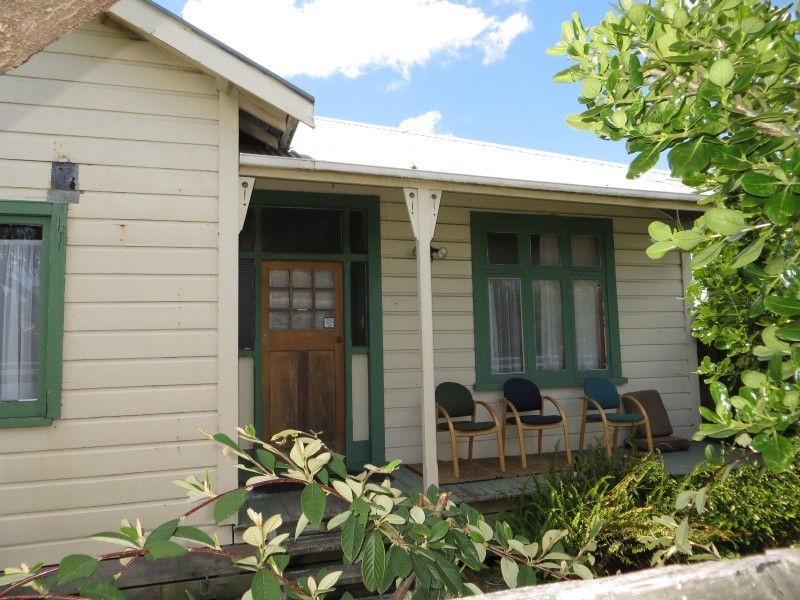Buying Main Street Time To Add Commercial Real Estate To Your Portfolio
Post on: 7 Апрель, 2015 No Comment

In the late 1950s Pete and Charley Thomson’s dad ran a five-and-dime at 123 Main Street. It’s an empty lot now, but the brothers have plans.
Hometown investors: Charley (left) and Pete Thomson scooped up a chunk of Charles City, Iowa real estate.
For the full 2013 Investment Guide, click here.
After growing up in the 1960s in Charles City, Iowa, a rural county seat known for its tornadoes and tractor factory (now a vacant site), brothers Charley and Pete Thomson were happy to move on. “When I was 20 I couldn’t wait to get out of there,” admits Pete, 56, who runs his own TV and radio ad sales outfit in Denton, Tex.
Now, however, the brothers are betting on a comeback for Charles City, whose population has slipped below 8,000, from 10,000-plus in its 1950s heyday. In June they formed a limited liability company to buy a portfolio of local properties from a widow and her late husband’s estate. They’re now the proud owners of two Main Street retail storefronts with loft apartments, two multifamily properties, two single-family rentals, a storage facility/office complex and a vacant lot at 123 Main Street, where their dad used to run a Ben Franklin five-and-dime store and where they hope to build a $10 million mixed-use affordable housing/retail project. The price tag for all that property: just shy of $750,000, with no money down. (More on how they pulled that off later.)
To hear the brothers tell it, the deal represents a dollop of midlife nostalgia atop compelling economics–Iowa’s unemployment rate is only 5.2%, and the farm economy is booming. “We view Charles City and rural Iowa as an extraordinarily good investment right now,” says Charley, 52, who telecommutes part-time from Charles City to his job as a lawyer at DoALL Co. in Wheeling, Ill. Residents don’t have to contend with “big city prices or problems” but might reasonably go to Chicago or Minneapolis every week or so for entertainment, he says. “At 50,” muses Pete, “you start to think about what’s really important to you. Having a chance to work with my brother and make contributions to a town that I truly love is huge.”
Few boomers can go home again to buy up Main Street. But direct ownership of commercial real estate is making a comeback, and rightly so. Historically low interest rates, combined with real estate prices still depressed from the real estate bust and Great Recession, make this a smart time to buy.
Can direct ownership be risky and a hassle? Yep. “When I first recommend it to a lot of people, they go white,” says Pat Carroll, a financial planner in Rockville, Md. But, he adds, everyone needs real estate in an investment portfolio, and “the way to buy with the most potential is individual ownership.”
If you’re the queasy or hands-off type, stick to publicly traded REITs. Or, if you’re an accredited investor (meaning you’ve got more than $1 million in net worth outside your home or an income of at least $200,000) and are willing to take on more risk, consider limited partnerships put together by real estate developers. If you’re even wealthier (with at least $5 million to put into direct ownership) and don’t flinch at management fees, you can also delegate the work to the likes of Bank of America ‘s U.S. Trust unit, which manages about $3 billion in commercial real estate for ultra-high-net-worth clients, for an annual fee of 1% to 1.45% of the properties’ market value. A team there scours the U.S. for promising properties to buy and secures third-party property managers for those properties, which are held in individual clients’ separate accounts.
“People are looking for real assets that offset the volatility in the stock market, and they’re looking for yield as well as capital appreciation,” says Dennis Moon, head of the U.S. Trust unit. “It’s real dirt,” he adds. Want some of your own dirt? Start with these pointers.
THINK LONG TERM
Moon advises clients to be prepared to hold properties a minimum of ten years. Lots of folks who bought investment real estate at the last peak are substantially underwater now, just as those who bought homes right before the fall are. But a dip in value is not necessarily a disaster if rents generate enough cash to cover expenses–taxes, insurance, repairs, and monthly principal and interest payments on any debt. The Thomsons’ properties bring in $13,000 to $15,000 a month in rent, making them cash-flow positive.

DO DEEP DILIGENCE
“Would you be shocked that sellers don’t disclose everything?” asks Gary Grabel, author of Wealth Opportunities in Commercial Real Estate (Wiley, 2011). As a corporate lawyer Charley Thomson did extensive due diligence–”Probably overkill,” he says–on the Charles City deal. For example, he took raw numbers and reconstructed profit-and-loss statements on each building and then had his accountant double-check his numbers. Even though the properties were 100% occupied, he knew to factor in vacancy rates.
Obviously you’ll need to get physical elements, like the roof and heating-and-cooling system, inspected. But first-time buyers sometimes miss hidden defects that may not be physical.
Example: A friend of Grabel’s bought a strip shopping center near Cal State, Northridge, with plans to lease to a frozen yogurt store to boost traffic. What he overlooked before buying is that the center didn’t (according to local rules) have enough parking spots for such a high-traffic tenant. Grabel helped him finesse the issue; he increased the spots by re-striping part of the lot for smaller compact cars and added valet parking during peak hours. (Look for Grabel’s free nine-page due diligence checklist at wiley.com/go/wealthopportunities .)
USE LEVERAGE CAREFULLY
Moon likes all-cash deals. He’s now working with a client worth $200 million who plans to invest $5 million of cash into multifamily residential and warehouse properties. With no debt to service, they should throw off income of 8% a year–before U.S. Trust’s fee.
More typically, however, investors are now putting 20% to 40% down–and finding that’s enough to secure fairly attractive loan terms from a bank. When comparing commercial loans, look at more than the rate. Is the loan nonrecourse–meaning secured only by the property and not by your other assets? If it’s a recourse loan, what, if any, are the limitations on your liability? Spring for a good real estate lawyer who can compare and explain such arcane features as “defeasance” penalties.
So how did the Thomsons do a deal with no money down? They knew the elderly seller, who assumed a little under half of the debt at 5% interest–more than she’d earn on investment grade bonds or CDs but a good deal for the Thomsons. The rest they borrowed at 6% interest from First Security Bank & Trust, where their family has banked for nearly 100 years. The bank holds the first lien.














